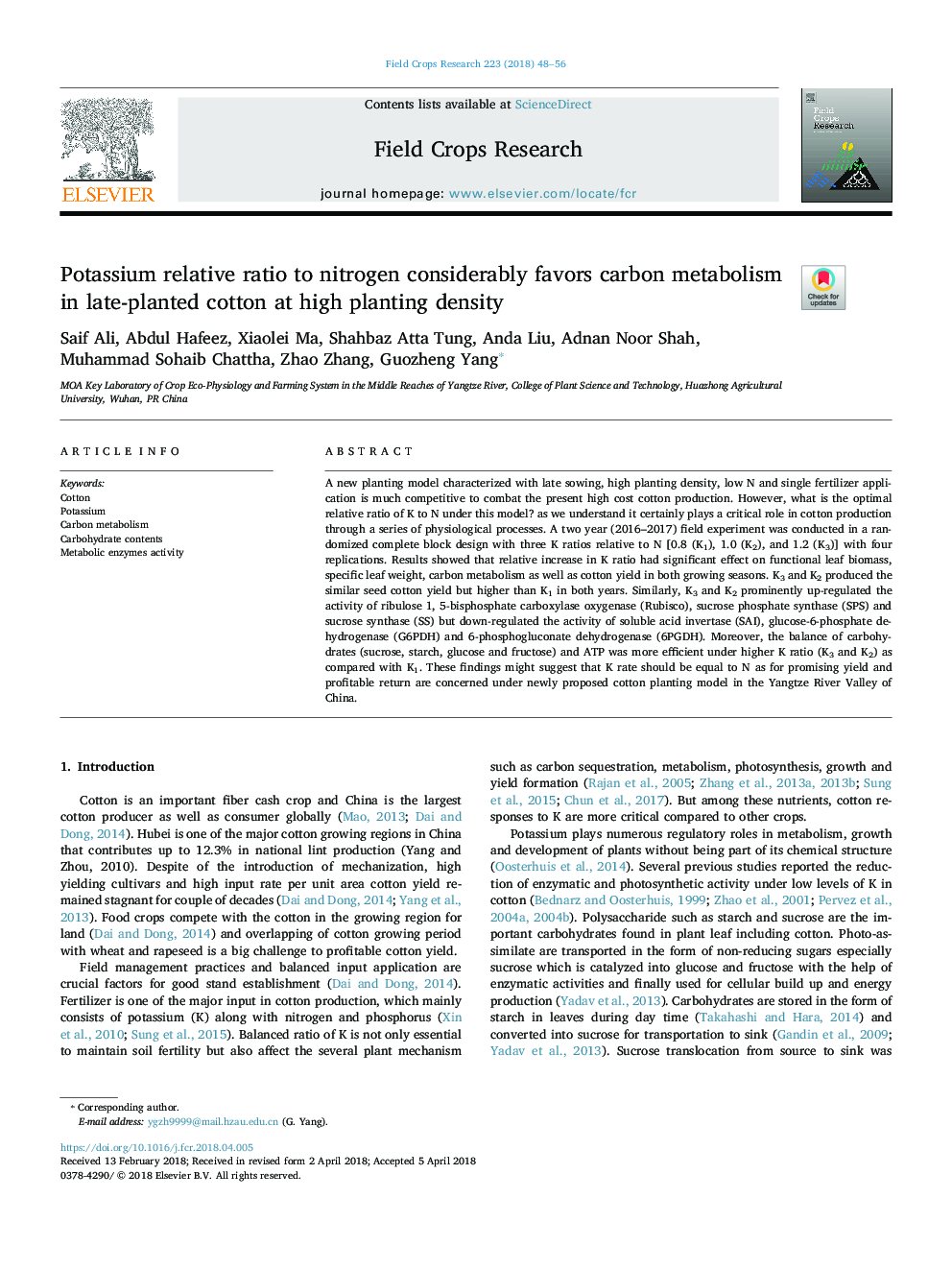| Article ID | Journal | Published Year | Pages | File Type |
|---|---|---|---|---|
| 8879143 | Field Crops Research | 2018 | 9 Pages |
Abstract
A new planting model characterized with late sowing, high planting density, low N and single fertilizer application is much competitive to combat the present high cost cotton production. However, what is the optimal relative ratio of K to N under this model? as we understand it certainly plays a critical role in cotton production through a series of physiological processes. A two year (2016-2017) field experiment was conducted in a randomized complete block design with three K ratios relative to N [0.8 (K1), 1.0 (K2), and 1.2 (K3)] with four replications. Results showed that relative increase in K ratio had significant effect on functional leaf biomass, specific leaf weight, carbon metabolism as well as cotton yield in both growing seasons. K3 and K2 produced the similar seed cotton yield but higher than K1 in both years. Similarly, K3 and K2 prominently up-regulated the activity of ribulose 1, 5-bisphosphate carboxylase oxygenase (Rubisco), sucrose phosphate synthase (SPS) and sucrose synthase (SS) but down-regulated the activity of soluble acid invertase (SAI), glucose-6-phosphate dehydrogenase (G6PDH) and 6-phosphogluconate dehydrogenase (6PGDH). Moreover, the balance of carbohydrates (sucrose, starch, glucose and fructose) and ATP was more efficient under higher K ratio (K3 and K2) as compared with K1. These findings might suggest that K rate should be equal to N as for promising yield and profitable return are concerned under newly proposed cotton planting model in the Yangtze River Valley of China.
Keywords
Related Topics
Life Sciences
Agricultural and Biological Sciences
Agronomy and Crop Science
Authors
Saif Ali, Abdul Hafeez, Xiaolei Ma, Shahbaz Atta Tung, Anda Liu, Adnan Noor Shah, Muhammad Sohaib Chattha, Zhao Zhang, Guozheng Yang,
